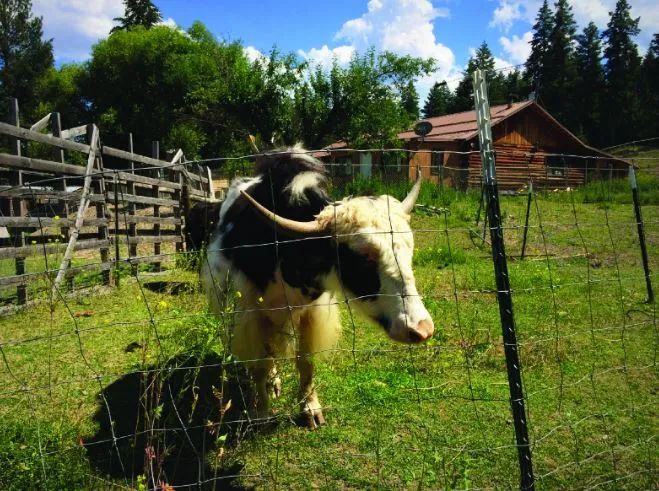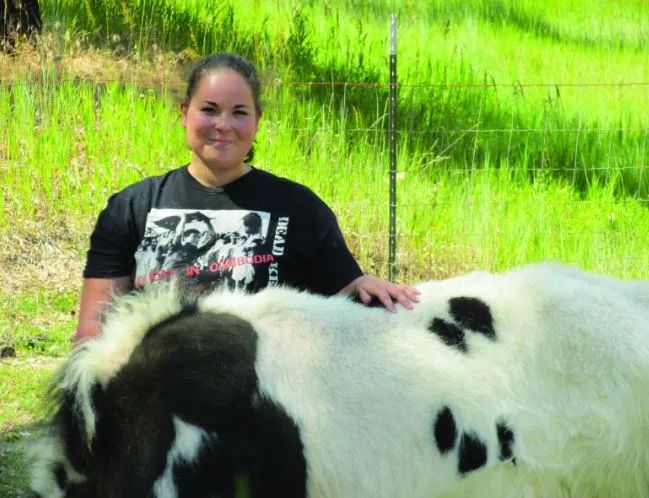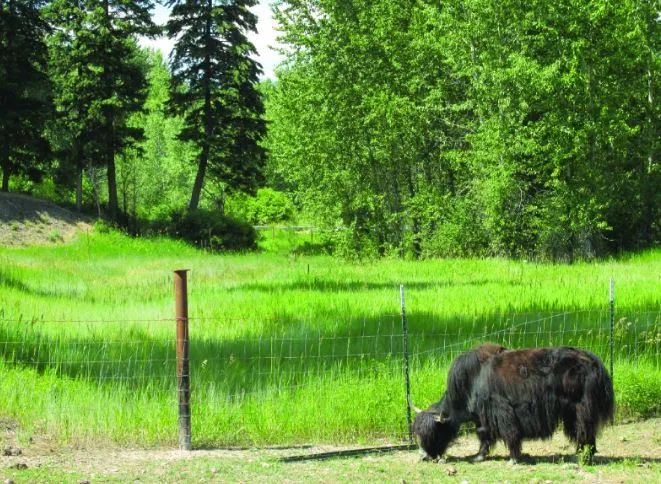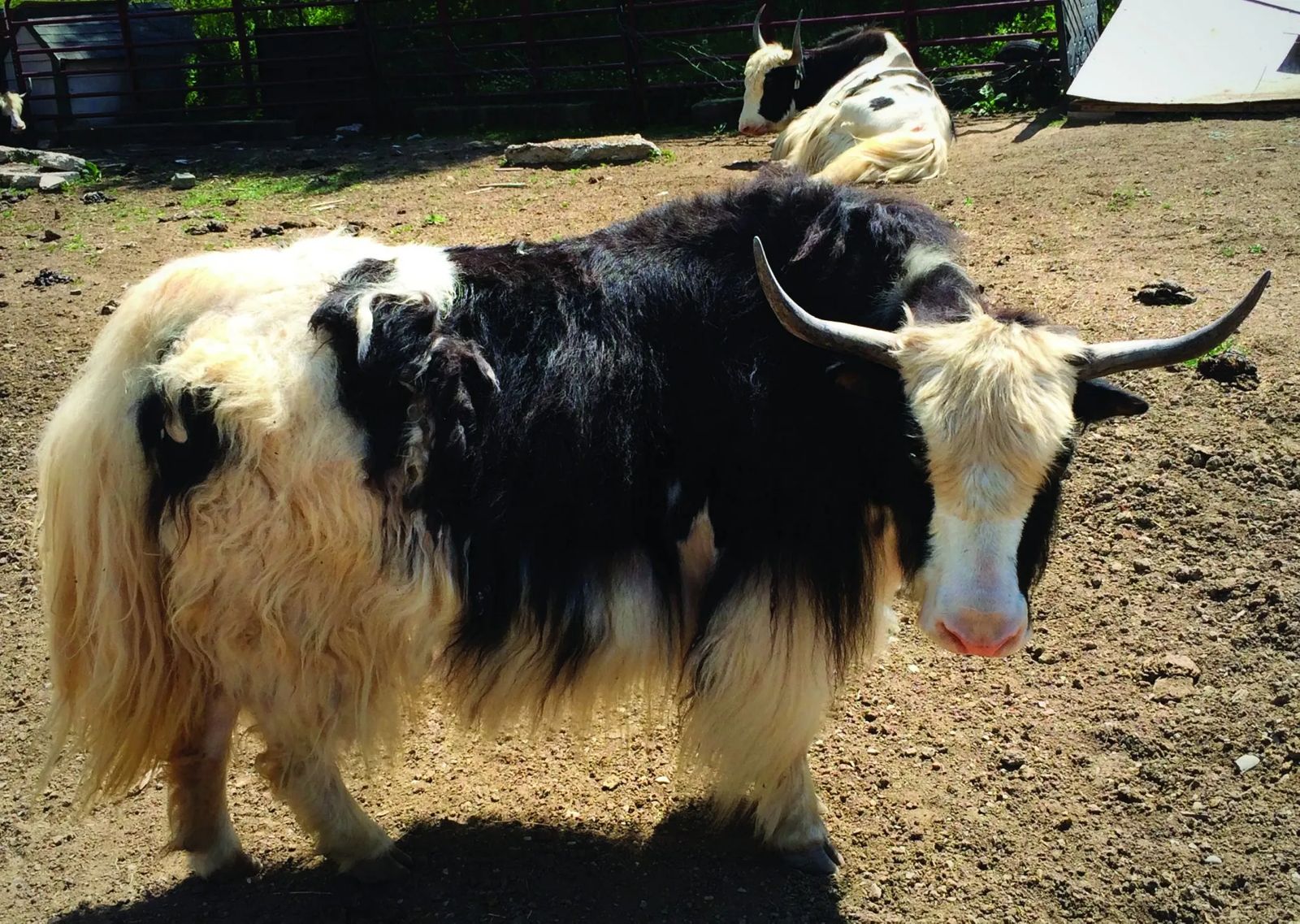
A New Breed of Ranching
00Royal T breaks new ground with a few woolly beasts
As soon as I arrived, I knew that the Royal T Ranch wasn't like the other cattle ranches I'd seen, and the owner, Natalie, wasn't your average ranch gal.
The Royal T Ranch, owned by Tim and Natalie Thurman, is tucked away in a quiet canyon about 20 miles outside of Missoula, Montana, surrounded by wilderness, pine trees, and rocky cliffs — not the type of place you'd expect to find a successful ranching operation.

A short drive along the river brought me to the Royal T driveway, where Natalie was waiting with a bright smile, wearing purple muck boots and a band t-shirt from the ‘90s. I knew I was in for an adventure, as Natalie directed me up the hill to the ranch headquarters — a hand-hewn log house surrounded by pastures, outbuildings, and the usual array of work-in-progress farm vehicles.
Natalie's setup looks pretty much like any other family-owned cattle operation at first glance, with its barns, barbed wire fences, and alleyways designed for moving large stock. But, a closer look reveals something unusual.
Lazing in the shaded areas surrounding the outbuildings was a herd of strange, woolly beasts from a bygone ice age, making soft grunting sounds to communicate their presence. The strange animals are Tibetan yaks, and Natalie is their biggest fan.

Despite being raised in the suburbs, and having never spent much time around livestock, Natalie chose to pursue a degree in Animal Science from California Polytechnic State University in San Luis Obispo. She planned to enroll in Veterinary School, but later pivoted toward a focus on cattle and swine management when she realized the student loan debt from medical school would present a hefty roadblock in her path toward a life of ranching.
“Growing up, everyone called me Dr. Doolittle,” she explains, laughing. “Around my third year of college, I realized that my dream of being a vet wasn't in line with the financial realities of that decision, so I changed direction. Shortly after, I met my husband. He had finished a tour of duty in Iraq and wanted to move to his land in Montana to start a family and a ranch. Our life goals were compatible, so we jumped in.”
She knew she wanted to raise livestock on the land that her husband inherited outside of Missoula, but the steep, tree-lined hills weren't well suited to the cattle she had planned to keep. “We were looking into new livestock options, and the yak stood out. We live in a heavily forested area with large apex predators, and yaks were a perfect fit. They can easily defend themselves against large predators, they are incredibly feed-efficient, they thrive through our long, cold winters, and they can browse or graze, depending on the forage available.”
Much like deer or elk, the yaks are opportunistic eaters who don't need the lush pastures that our modern cattle breeds require to maintain their weight. They will eat a little of everything, and are able to maintain themselves quite well on weeds, brush, conifer forests, and poor pastures unsuited to beef cattle.
We crest a hill overlooking a low-lying pasture, and I get my first glimpse of Royal T's herd sire, a giant, majestic piebald yak bull named 'Bullet'. He's standing in the shadows of the hay barn, overseeing his herd of cows and calves with a calm, confident demeanor.
We make our way down the hill to get a closer look, and I express a bit of trepidation about approaching the bull for an introduction, but Natalie assures me that he'll treat me kindly. Sure enough, the big fellow is reserved but tolerant as I snap some photos and hold out a hand to him in greeting. He gives me a sniff and ambles off, placidly following one of his cows to the watering hole.

Yaks are incredibly mellow. Unlike bison, or even domestic cattle, yaks possess a serene manner that lends itself well to a smallholding. “They tend to think before they act,” Natalie explains. “If a yak gets a leg caught in a fence, they will stop and assess the situation before carefully working their way out of trouble. You won't see them panic and tear themselves up like a cow would.” This makes sense once you understand the background of the species.
Domesticated nearly 10,000 years ago, yaks have long enjoyed a close partnership with humans in their native habitat of the Himalayas. Bred for their meat, milk, and soft wool, they have also been trusted to pack people and gear over some of the most treacherous mountains in the world. Surefooted, nimble, and gentle, yaks are truly made for the mountains, making them a perfect option for small producers here in Montana.
“They are very easy keepers,” Natalie explains, as we follow a cow and calf pair up a steep hillside toward the upper pasture. The cow quietly picks through the grasses, choosing bites of mustard, thistle, and dandelion. She grazes more like a goat than a cow, seeming to prefer weeds over grass. “Many of my yaks will outright refuse grain when it's offered, so we don't even bother. They stay fat and finish just fine on grass and a little alfalfa hay to keep them spoiled.”
An adult yak needs only 6-10 pounds of grass hay per day to maintain condition, compared to the 25 pounds required by a beef cow. Some attribute this low feed intake to the extra-large rumen that yaks possess, designed to wring every last bit of nutrition out of their forage.
Although their feed intake is small, they are surprisingly large animals. A full-grown yak bull can tip the scales at 1,800 pounds, with cows averaging around 1000 pounds; comparable to medium-sized cattle breeds. The calves weigh about 30 pounds at birth, and are born with a thick downy coat, enabling them to easily survive an unassisted mid-winter birth.
Natalie proceeds to explain that yaks can be crossed with modern cattle breeds. When crossed with beef cattle, they produce a hybrid offspring with leaner meat, shorter finishing time, calmer demeanor, and less need for grain – a potent combination for beef producers to consider, in a time when grain prices and consumer preference for healthy choices can make or break a cattle operation.
“Yak meat is very lean, and very rich. More like elk than beef,” Natalie says. Boasting higher protein content and fewer calories than skinless chicken breast, yak meat offers a delicious alternative for health-conscious consumers.
“The best thing about yaks is that they have more utility than any other livestock species I've found,” Natalie explains. “They produce delicious meat which commands a high price. They also provide very rich milk which makes wonderful butter and cheese. Their wool is sought after by fiber artists and is used to knit the softest, warmest socks you've ever worn. And, if you're inclined, they can be used as draft animals in the field, they can be ridden, and they can pack your hunt out of the woods for you.”
In the Himalayas, yaks are used to pack 250-pound loads of gear up to altitudes as high as 20,000 feet, traversing trails that mules would refuse. They eat little more than moss and lichens along the way, all the while providing creamy milk for their human handlers to drink during the trip.
As we complete the tour of Royal T and prepare to say our goodbyes, I thank Natalie for the fascinating introduction to these animals. Natalie smiles her signature bright grin and says, “People get into yaks for novelty, conservation, or overall utility. But, many folks just fall in love with the personality of the yaks.”
After visiting Natalie, Royal T, and the unique animals who call the place home, I can understand how a person might fall in love with the personality of these gentle giants. Consider me their newest fan.

Need a Few More Yak Facts?
Check out the International Yak Association at www.iyak.org.













